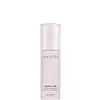What's inside
What's inside
 Key Ingredients
Key Ingredients

 Benefits
Benefits

 Concerns
Concerns

No concerns
 Ingredients Side-by-side
Ingredients Side-by-side

Water
Skin ConditioningTerminalia Ferdinandiana Fruit Extract
AntioxidantPropanediol
SolventAscorbyl Tetraisopalmitate
Antioxidant1,2-Hexanediol
Skin ConditioningNiacinamide
SmoothingSqualane
EmollientTriethylhexanoin
MaskingArachidyl Alcohol
EmollientTocopheryl Acetate
AntioxidantVinyldimethicone
Titanium Dioxide
Cosmetic ColorantSynthetic Fluorphlogopite
Behenyl Alcohol
EmollientGlyceryl Stearate
EmollientPEG-100 Stearate
Glycerin
HumectantHydroxyethyl Acrylate/Sodium Acryloyldimethyl Taurate Copolymer
Emulsion StabilisingPolyacrylate-13
Arachidyl Glucoside
EmulsifyingPolyisobutene
Sorbitan Isostearate
EmulsifyingCitric Acid
BufferingSodium Citrate
BufferingXanthan Gum
EmulsifyingPolysorbate 20
EmulsifyingSodium Hyaluronate
HumectantPolysorbate 60
EmulsifyingDisodium EDTA
Tin Oxide
AbrasiveEthylhexylglycerin
Skin ConditioningHydroxypropyltrimonium Hyaluronate
Hydrolyzed Hyaluronic Acid
HumectantSodium Acetylated Hyaluronate
HumectantHyaluronic Acid
HumectantPotassium Hyaluronate
Skin ConditioningSodium Hyaluronate Crosspolymer
HumectantWater, Terminalia Ferdinandiana Fruit Extract, Propanediol, Ascorbyl Tetraisopalmitate, 1,2-Hexanediol, Niacinamide, Squalane, Triethylhexanoin, Arachidyl Alcohol, Tocopheryl Acetate, Vinyldimethicone, Titanium Dioxide, Synthetic Fluorphlogopite, Behenyl Alcohol, Glyceryl Stearate, PEG-100 Stearate, Glycerin, Hydroxyethyl Acrylate/Sodium Acryloyldimethyl Taurate Copolymer, Polyacrylate-13, Arachidyl Glucoside, Polyisobutene, Sorbitan Isostearate, Citric Acid, Sodium Citrate, Xanthan Gum, Polysorbate 20, Sodium Hyaluronate, Polysorbate 60, Disodium EDTA, Tin Oxide, Ethylhexylglycerin, Hydroxypropyltrimonium Hyaluronate, Hydrolyzed Hyaluronic Acid, Sodium Acetylated Hyaluronate, Hyaluronic Acid, Potassium Hyaluronate, Sodium Hyaluronate Crosspolymer
Water
Skin ConditioningGlycerin
HumectantOleth-20
CleansingSodium Ascorbyl Phosphate
AntioxidantHydroxyethylcellulose
Emulsion StabilisingPhenoxyethanol
PreservativeCaprylyl Glycol
EmollientHexylene Glycol
EmulsifyingCitric Acid
BufferingParfum
MaskingPEG-12 Dimethicone
Skin ConditioningTocopheryl Acetate
AntioxidantAroma
Hydrolyzed Vegetable Protein
Skin ConditioningDisodium Phosphate
BufferingPolysorbate 60
EmulsifyingAloe Barbadensis Leaf Extract
EmollientCitrus Aurantium Dulcis Fruit Extract
MaskingSodium Hyaluronate
HumectantThioctic Acid
AntioxidantCalcium Ascorbate
AntioxidantSodium Phosphate
BufferingSorbitol
HumectantCitrus Grandis Seed Extract
AstringentSodium Benzoate
MaskingAscorbic Acid
AntioxidantCamellia Sinensis Leaf Extract
AntimicrobialEuphrasia Officinalis Extract
AntimicrobialRosa Canina Fruit Extract
AstringentLeuconostoc/Radish Root Ferment Filtrate
AntimicrobialPotassium Sorbate
PreservativeTriacetin
AntimicrobialSodium Benzotriazolyl Butylphenol Sulfonate
UV AbsorberBenzyl Benzoate
AntimicrobialLimonene
PerfumingLinalool
PerfumingCI 15985
Cosmetic ColorantWater, Glycerin, Oleth-20, Sodium Ascorbyl Phosphate, Hydroxyethylcellulose, Phenoxyethanol, Caprylyl Glycol, Hexylene Glycol, Citric Acid, Parfum, PEG-12 Dimethicone, Tocopheryl Acetate, Aroma, Hydrolyzed Vegetable Protein, Disodium Phosphate, Polysorbate 60, Aloe Barbadensis Leaf Extract, Citrus Aurantium Dulcis Fruit Extract, Sodium Hyaluronate, Thioctic Acid, Calcium Ascorbate, Sodium Phosphate, Sorbitol, Citrus Grandis Seed Extract, Sodium Benzoate, Ascorbic Acid, Camellia Sinensis Leaf Extract, Euphrasia Officinalis Extract, Rosa Canina Fruit Extract, Leuconostoc/Radish Root Ferment Filtrate, Potassium Sorbate, Triacetin, Sodium Benzotriazolyl Butylphenol Sulfonate, Benzyl Benzoate, Limonene, Linalool, CI 15985
Ingredients Explained
These ingredients are found in both products.
Ingredients higher up in an ingredient list are typically present in a larger amount.
Citric Acid is an alpha hydroxy acid (AHA) naturally found in citrus fruits like oranges, lemons, and limes.
Like other AHAs, citric acid can exfoliate skin by breaking down the bonds that hold dead skin cells together. This helps reveal smoother and brighter skin underneath.
However, this exfoliating effect only happens at high concentrations (20%) which can be hard to find in cosmetic products.
Due to this, citric acid is usually included in small amounts as a pH adjuster. This helps keep products slightly more acidic and compatible with skin's natural pH.
In skincare formulas, citric acid can:
While it can provide some skin benefits, research shows lactic acid and glycolic acid are generally more effective and less irritating exfoliants.
Most citric acid used in skincare today is made by fermenting sugars (usually from molasses). This synthetic version is identical to the natural citrus form but easier to stabilize and use in formulations.
Read more about some other popular AHA's here:
Learn more about Citric AcidGlycerin is already naturally found in your skin. It helps moisturize and protect your skin.
A study from 2016 found glycerin to be more effective as a humectant than AHAs and hyaluronic acid.
As a humectant, it helps the skin stay hydrated by pulling moisture to your skin. The low molecular weight of glycerin allows it to pull moisture into the deeper layers of your skin.
Hydrated skin improves your skin barrier; Your skin barrier helps protect against irritants and bacteria.
Glycerin has also been found to have antimicrobial and antiviral properties. Due to these properties, glycerin is often used in wound and burn treatments.
In cosmetics, glycerin is usually derived from plants such as soybean or palm. However, it can also be sourced from animals, such as tallow or animal fat.
This ingredient is organic, colorless, odorless, and non-toxic.
Glycerin is the name for this ingredient in American English. British English uses Glycerol/Glycerine.
Learn more about GlycerinPolysorbate 60 is used to help stabilize products. It is a surfactant and emulsifier. These properties help keep ingredients together in a product. Surfactants help reduce surface tension between ingredients with different states, such as liquids and solids. Emulsifiers help prevent oils and waters from separating.
Polysorbate 60 is sorbitol-based and created from the ethoxylation of sorbitan. Ethoxylation is a chemical reaction used to add ethylene oxide. Sorbitan is a the dehydrated version of sorbitol, a sugar found in fruits.
In this case, the 60 comes from reacting 60 units of ethylene oxide with sorbitan.
Polysorbates are commonly used in medicine and foods.
Learn more about Polysorbate 60Sodium Hyaluronate is hyaluronic acid's salt form. It is commonly derived from the sodium salt of hyaluronic acid.
Like hyaluronic acid, it is great at holding water and acts as a humectant. This makes it a great skin hydrating ingredient.
Sodium Hyaluronate is naturally occurring in our bodies and is mostly found in eye fluid and joints.
These are some other common types of Hyaluronic Acid:
Learn more about Sodium HyaluronateTocopheryl Acetate is AKA Vitamin E. It is an antioxidant and protects your skin from free radicals. Free radicals damage the skin by breaking down collagen.
One study found using Tocopheryl Acetate with Vitamin C decreased the number of sunburned cells.
Tocopheryl Acetate is commonly found in both skincare and dietary supplements.
Learn more about Tocopheryl AcetateWater. It's the most common cosmetic ingredient of all. You'll usually see it at the top of ingredient lists, meaning that it makes up the largest part of the product.
So why is it so popular? Water most often acts as a solvent - this means that it helps dissolve other ingredients into the formulation.
You'll also recognize water as that liquid we all need to stay alive. If you see this, drink a glass of water. Stay hydrated!
Learn more about Water